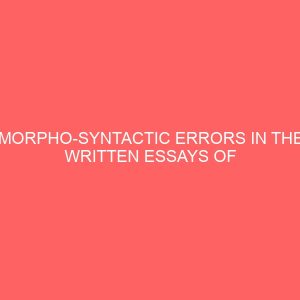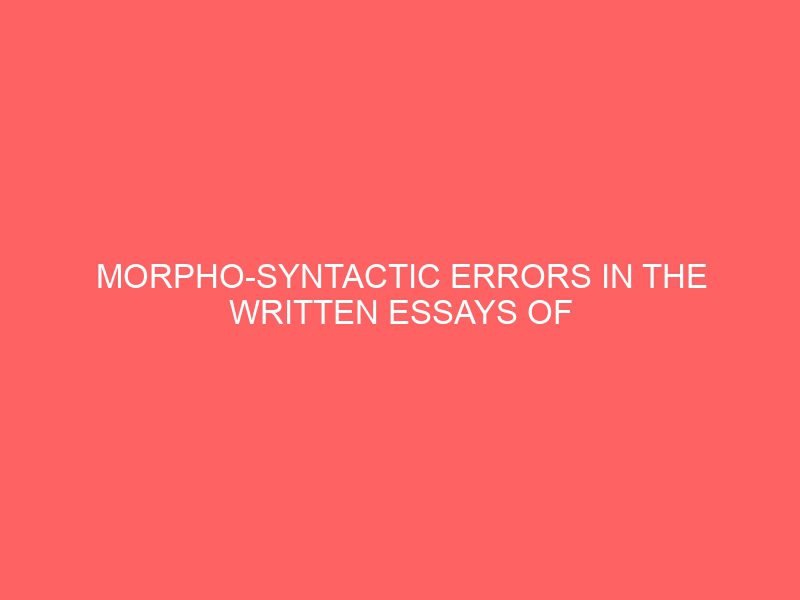Description
Abstract
Morphosyntax is the branch of linguistics which studies the relationship between morphology and syntax. Morphosyntactic errors occur when words are brought together arbitrarily, carelessly and ignorantly of morphological and syntactic rules. However, this research was carried out to examine morphosyntactic errors in written essays of undergraduates in Nnamdi Azikiwe University and to find possible solutions of these errors. The researcher deemed it worthwhile to embark on this, because of the alarming rate which morphosyntactic errors occur in the written texts of the undergraduates. Four faculties were sampled in the University. They are: Law, Management Sciences, Social Sciences and Arts. 25 scripts were randomly selected from each faculty, making a total of 100 scripts. Scripts were analyzed to ascertain the respondents knowledge of morphosyntax and to investigate the possible causes of these errors. The findings of this research confirmed Corders view that morphosyntactic errors are both intralingual and interlingual. These errors occur as a result of mother tongue interference, overgeneralization of grammatical rules, wrong application of inflectional morphemes, concord errors and inconsistencies of wordformation rules.
Table of Contents
Title Page i
Approval Page ii
Certification iii
Acknowledgments iv
Dedication v
Table of Contents vi
Abstract viii
Chapter One: Introduction
1.1 Background to the Study 1
1.2 Statement of the Problem 3
1.3 Purpose of the Study 3
1.4 Significance of the Study 4
1.5 Scope of the Study 4
1.6 Research Questions 5
Chapter Two: Review of Related Scholarship
2.1 Morphology: A Conceptual Discourse 6
2.2 Syntax: A Conceptual Discourse 26
2.3 Morphosyntax: A Conceptual Discourse and Issues in Second Language Learning 30
2.4 Morphosyntax: Issues in Nnamdi
Azikiwe University Undergraduates Writing 40
2.5 Theoretical Framework 44
2.6 Empirical Studies. 51
2.7 Summary 54
Chapter Three: Methodology
3.1 Design of the Study 56
3.2 Area of the Study 56
3.3 Population of the Study 56
3.4 Sample and Sampling Techniques 57
3.5 Method of Data Collection 58
3.6 Method of Data Analysis 58
Chapter Four: Data Analysis
4.1 Presentation and Analysis of Data 59
Chapter Five: Discussion of Results and Conclusion
5.1 Answers to Research Questions 66
5.2 Discussion of Findings 69
5.3 Summary 71
5.4 Conclusion 72
5.5 Recommendations 72
5.6 Suggestions for Further Studies 75
Works Cited 76
Appendix 82








Reviews
There are no reviews yet.